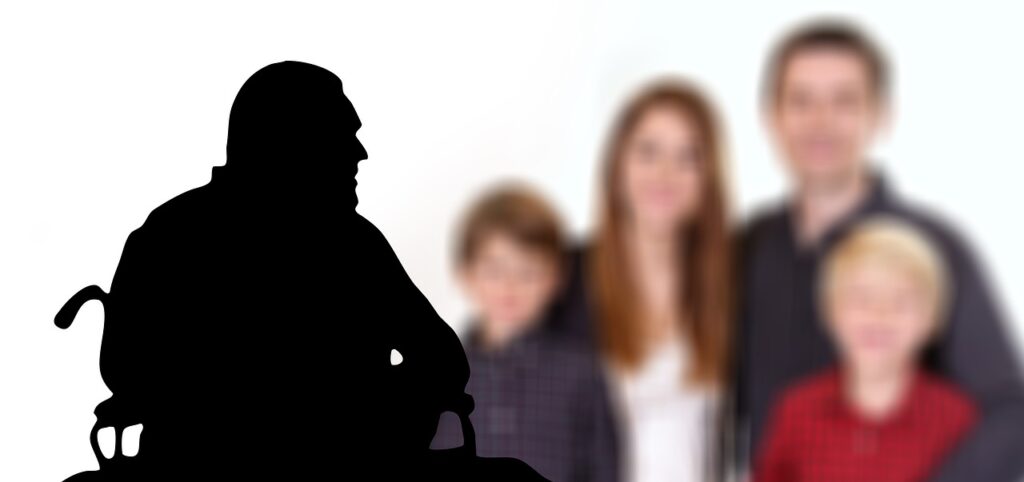
Dementia is an umbrella term for a set of medical conditions marked by memory loss and declining cognitive function, which are primarily but not exclusively associated with advanced age. Alzheimer’s disease is the single most common and best-known type of dementia, but the condition can take many other forms. Regardless of its specific presentation, dementia is always caused by abnormal changes in brain function. Progressive symptoms, in which the patient’s cognitive functions decline at accelerating rates as their condition progresses, are also common to most forms of dementia.
BACKGROUND
Dementia almost always involves significant and progressive memory loss, which is often the first noticeable symptom. Some degree of memory loss and forgetfulness are normal parts of aging, but dementia is differentiated by the patient’s permanent inability to recall information they once possessed. Dementia-related memory loss also tends to have an adverse impact on the patient’s everyday life and ability to function independently.
Various subtypes of dementia have differing causes, but they all share the common feature of damaging brain and nerve cells in specific regions of the brain. In many cases, this cellular damage initially arises in or most profoundly affects the hippocampus, which is the region of the brain that governs memory and learning functions. The processes that cause brain and nerve cell damage most often occur in people of advanced age (65 and older). However, the World Health Organization (WHO) notes that about 9% of all dementia cases occur in younger people. In a singularly exceptional case, a 19-year-old man from China became the youngest person ever to be diagnosed with a dementia-related condition (Alzheimer’s disease). The diagnosis was reported in a case study published in a 2023 edition of the Journal of Alzheimer’s Disease, and followed for two years of progressive memory loss suffered by the patient. According to Dementia UK, the typical age range associated with the vast majority of early-onset dementia cases is 30–65.
MAJOR TYPES OF DEMENTIA
The US Centers for Disease Control and Prevention (CDC) identify five common subtypes of dementia, each of which is marked by its own set of causes, symptoms, and pathologies. According to the Alzheimer’s Association, Alzheimer’s disease represents about 60% to 80% of dementia cases. Vascular dementia is the second-most common form, accounting for about 10% of dementia cases according to CDC estimates. Other subtypes include Lewy body dementia, fronto-temporal dementia, and mixed dementia.
Alzheimer’s disease
Alzheimer’s disease develops when certain proteins both within and outside brain cells build up at high levels, interfering with brain cell function and impending the ability of brain cells to communicate with each other. The classic initial symptom of Alzheimer’s disease is the inability to recall recent events, even if they happened mere minutes of hours prior. Meanwhile, older memories tend to remain intact for longer periods of time, but these too tend to break down as the condition progresses. At later stages of Alzheimer’s disease, patients may also lose mobility, self-care capabilities, and the ability to speak or communicate. Many also experience profound personality changes.
Vascular dementia
In cases of vascular dementia, the patient’s symptoms arise from irregularities in blood flow and oxygen delivery to the brain. This may occur as the consequence of a stroke, or due to comorbidities such as hypertension, high cholesterol, or diabetes. Experts increasingly use the term “vascular cognitive impairment” (VCI) instead of vascular dementia, which reflects a growing scientific understanding of the condition as causing variable degrees of cognition loss.
Lewy body dementia
Lewy body dementia is a collective term used to describe two specific subtypes of dementia: Parkinson’s disease dementia, and dementia with Lewy bodies (DLB). Both types of Lewy body dementia are marked by abnormal protein buildups in the brain. Progressive memory loss remains the earliest and most common symptom, but patients with Lewy body dementia also tend to experience other symptoms including movement and mobility disturbances, posture changes, confusion, excessive daytime drowsiness, and behavioral symptoms including long spells of apparently purposeless or vacant staring. Patients may also struggle to sleep at night, and some experience visual hallucinations.
Fronto-temporal dementia
This form of dementia impacts the brain’s frontal regions, which are directly behind the patient’s forehead, and/or the temporal lobes located behind the ears. It is caused by a set of diseases that cause fronto-temporal nerve cell damage and degeneration, but researchers do not yet understand why these causal conditions occur specifically in the brain’s frontal region and temporal lobes. In addition to memory loss, behavioral and personality changes along with disturbances of language use, movement, and judgment often occur in cases of fronto-temporal dementia due to the physical degeneration of the brain regions that govern these functions.
Mixed dementia
Research studies involving brain autopsies have shown that some patients have simultaneous physical signatures of more than one type of dementia. For instance, a patient’s brain tissues may show signs of both Alzheimer’s disease and fronto-temporal dementia. These cases are known as mixed dementia, and they occur most often in patients over the age of 80.
OTHER CONDITIONS ASSOCIATED WITH DEMENTIA SYMPTOMS
In addition to the medical conditions and diseases known to play a role in vascular dementia, many other conditions are linked to dementia and the symptoms it causes. These include Huntington’s disease, Creutzfeldt-Jakob disease (CJD), and traumatic brain injury (TBI). Huntington’s disease is a genetic condition marked by nerve cell degeneration in the brain and spinal cord, which often causes dementia-like symptoms. Creutzfeldt-Jakob disease is a rare, fatal condition that usually affects people over the age of 60 and may be caused by pathogenic proteins known as prions. Traumatic brain injury, which arises most often in soldiers and athletes who participate in contact sports, results from repetitive overexposure to head trauma.
REVERSIBLE DEMENTIA
Some dementia-like conditions cause symptoms with reversible causes, and symptoms may abate or resolve with proper diagnosis and treatment. Common underlying causes include medication side effects or interactions, nutrient deficiencies, autoimmune disorders, infections, thyroid imbalances, fluid buildups (hydrocephalus), and subdural bleeding. Benign or malignant brain tumors may also cause dementia-like symptoms, which may or may not be treatable depending on the size, nature, and location of the tumor.
TREATMENT, PROGNOSIS, AND DEMENTIA RESEARCH
Progressive dementias cannot be cured. However, they can be treated with a combination of specialized medications and lifestyle improvements including a healthier diet and regular exercise. These treatments may help reduce the severity of symptoms, slow down the rate at which they progress, and help the patient manage their condition more successfully. Scientific investigation of dementia continues to focus on treatments and interventions with curative potential, though progress remains elusive. Emerging research suggests that multiple lifestyle factors, including regular exercise, smoking cessation, eating a healthy diet, and engaging the brain in mentally challenging activities, can reduce a person’s risk of developing dementia.
Resources
Websites
“About Dementia.” Centers for Disease Control and Prevention. April 5, 2019. https://www.cdc.gov/aging/dementia/index.html (accessed June 25, 2024).
“Dementia.” Mayo Clinic. February 13, 2024. https://www.mayoclinic.org/diseases-conditions/dementia/symptoms-causes/syc-20352013 (accessed June 25, 2024).
“Dementia.” World Health Organization. March 15, 2023. https://www.who.int/news-room/fact-sheets/detail/dementia (accessed June 25, 2024).
“What Is Demetia?” Alzheimer’s Association. https://www.alz.org/alzheimers-dementia/what-is-dementia (accessed June 25, 2024).
“What Is Young Onset Demetia?” Dementia UK. March 2024. https://www.dementiauk.org/information-and-support/young-onset-dementia/what-is-young-onset-dementia/ (accessed June 25, 2024).
Organizations
Alzheimer’s Association, 225 N. Michigan Avenue, Floor 17, Chicago, Illinois, 60601, (800) 272-3900, https://www.alz.org/ .
Alzheimer’s Foundation of America, 322 Eighth Avenue, 16th Floor, New York, New York, 10001, (866) 232-8484, info@alzfdn.org, https://alzfdn.org/ .
Greene, James. “Dementia.” Gale Health and Wellness Online Collection, Gale, 2024. Gale Health and Wellness, link.gale.com/apps/doc/OQRYJC144014529/HWRC?u=slnsw_public&sid=bookmark-HWRC&xid=ce4f08ee. Accessed 1 Aug. 2024.
